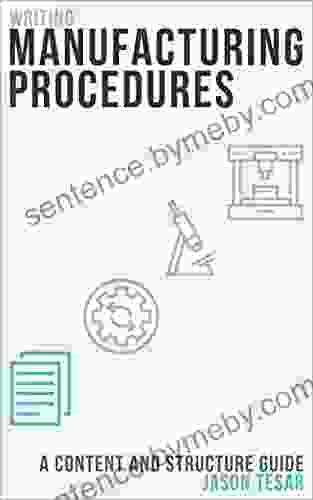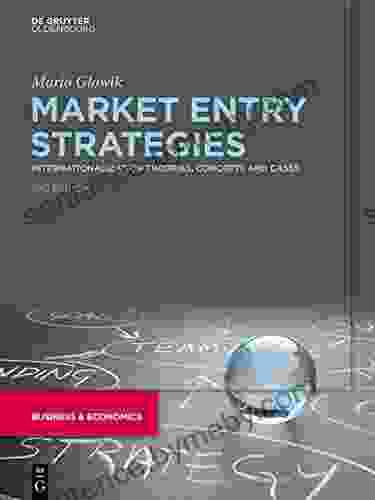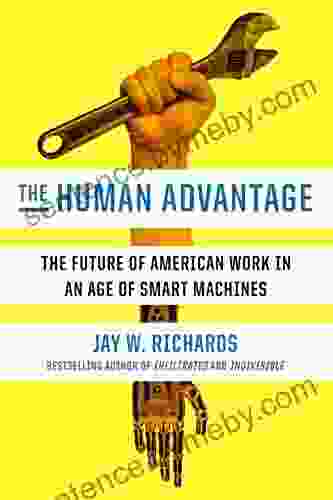The Future of American Work in an Age of Smart Machines

The rise of automation and artificial intelligence (AI) is having a profound impact on the American workforce. Smart machines are increasingly taking over tasks that were once performed by humans, leading to concerns about job displacement and economic inequality. However, these technologies also have the potential to create new jobs and boost productivity, leading to a more prosperous future for all.
In "The Future of American Work in an Age of Smart Machines," authors James Bessen and Erik Brynjolfsson provide a comprehensive analysis of the challenges and opportunities presented by smart machines. They draw on extensive research to explore the impact of automation on different industries, occupations, and workers. They also discuss the policy implications of these changes, offering recommendations for how to prepare for the future of work.
4.7 out of 5
| Language | : | English |
| File size | : | 1931 KB |
| Text-to-Speech | : | Enabled |
| Screen Reader | : | Supported |
| Enhanced typesetting | : | Enabled |
| X-Ray | : | Enabled |
| Word Wise | : | Enabled |
| Print length | : | 246 pages |
The Impact of Smart Machines on the American Workforce
Smart machines are already having a significant impact on the American workforce. In the manufacturing sector, for example, robots are increasingly being used to perform tasks that were once done by human workers. This has led to job losses in some industries, but it has also created new jobs in other areas, such as robot maintenance and repair. The authors argue that this trend is likely to continue in the years to come, as smart machines become more sophisticated and affordable.
The impact of smart machines is not limited to the manufacturing sector. It is also being felt in the service sector, where AI-powered systems are increasingly being used to automate tasks such as customer service and data entry. This is leading to job losses in some areas, but it is also creating new jobs in areas such as AI development and data analysis.
The authors find that the overall impact of smart machines on the American workforce is likely to be positive. They argue that smart machines will create more jobs than they displace, and that these new jobs will be higher-paying and more interesting than the jobs that are lost. However, they also acknowledge that the transition to a smart machine-powered economy will not be without its challenges.
The Challenges of the Future of Work
The authors identify several challenges that the American workforce will need to address in Free Download to prepare for the future of work. These challenges include:
- The Skills Gap: Smart machines require workers to have new skills, such as data analysis, programming, and AI development. Many American workers do not currently have these skills, and it will be important to invest in education and training programs to help them acquire these skills.
- Economic Inequality: Smart machines could lead to increased economic inequality, as the benefits of automation are likely to be concentrated among a small number of highly skilled workers. It will be important to develop policies that ensure that the benefits of automation are shared more broadly.
- Job Displacement: Smart machines could lead to job displacement in some industries and occupations. It will be important to develop policies that help workers who are displaced by automation to find new jobs.
Preparing for the Future of Work
The authors offer several recommendations for how to prepare for the future of work. These recommendations include:
- Invest in Education and Training: It is critical to invest in education and training programs to help American workers acquire the skills they need to succeed in a smart machine-powered economy.
- Develop Policies to Promote Economic Equality: It is important to develop policies that ensure that the benefits of automation are shared more broadly. This could include policies such as a universal basic income or a robot tax.
- Support Workers Who Are Displaced by Automation: It is important to develop policies that help workers who are displaced by automation to find new jobs. This could include policies such as job retraining programs or wage insurance.
"The Future of American Work in an Age of Smart Machines" is a must-read for anyone who is interested in the future of work. The authors provide a comprehensive analysis of the challenges and opportunities presented by smart machines, and they offer valuable insights and strategies for navigating the changing landscape of work.
About the Authors
James Bessen is a professor of economics at Boston University. He is the author of several books on the economics of technology, including "The Great Restructuring: How the Digital Age is Changing the Way We Work and Live" and "Learning by ng: The Real Connection between Innovation, Wages, and Wealth."
Erik Brynjolfsson is a professor of economics at MIT. He is the author of several books on the economics of technology, including "The Second Machine Age: Work, Progress, and Prosperity in a Time of Brilliant Technologies" and "Machine, Platform, Crowd: Harnessing Our Digital Future."
4.7 out of 5
| Language | : | English |
| File size | : | 1931 KB |
| Text-to-Speech | : | Enabled |
| Screen Reader | : | Supported |
| Enhanced typesetting | : | Enabled |
| X-Ray | : | Enabled |
| Word Wise | : | Enabled |
| Print length | : | 246 pages |
Do you want to contribute by writing guest posts on this blog?
Please contact us and send us a resume of previous articles that you have written.
 Book
Book Novel
Novel Page
Page Chapter
Chapter Text
Text Story
Story Genre
Genre Reader
Reader Library
Library Paperback
Paperback E-book
E-book Magazine
Magazine Newspaper
Newspaper Paragraph
Paragraph Sentence
Sentence Bookmark
Bookmark Shelf
Shelf Glossary
Glossary Bibliography
Bibliography Foreword
Foreword Preface
Preface Synopsis
Synopsis Annotation
Annotation Footnote
Footnote Manuscript
Manuscript Scroll
Scroll Codex
Codex Tome
Tome Bestseller
Bestseller Classics
Classics Library card
Library card Narrative
Narrative Biography
Biography Autobiography
Autobiography Memoir
Memoir Reference
Reference Encyclopedia
Encyclopedia Jason Zweig
Jason Zweig Jason Sandberg
Jason Sandberg Rebecca Musser
Rebecca Musser Janice Tingum
Janice Tingum Marguerite Henry
Marguerite Henry Tegan Maher
Tegan Maher James Piereson
James Piereson Sara Blakely
Sara Blakely James Van Praagh
James Van Praagh Nicholas D Souza
Nicholas D Souza Mike Chappell
Mike Chappell Palmira Heine
Palmira Heine James Raffan
James Raffan James Poskett
James Poskett Jasper Kent
Jasper Kent James Renner
James Renner Rose Rivera
Rose Rivera Tori Day
Tori Day James Proctor
James Proctor Jason Wilson
Jason Wilson
Light bulbAdvertise smarter! Our strategic ad space ensures maximum exposure. Reserve your spot today!

 Elliott CarterStep-by-Step Guide for Dummies to Using All Generations of iPad Pro and iPad...
Elliott CarterStep-by-Step Guide for Dummies to Using All Generations of iPad Pro and iPad...
 Dashawn HayesBuilding Empathy in a Fractured World: A Comprehensive Guide to Fostering...
Dashawn HayesBuilding Empathy in a Fractured World: A Comprehensive Guide to Fostering...
 Clarence MitchellThe Ultimate Guide to Writing Effective Manufacturing Procedures: Content and...
Clarence MitchellThe Ultimate Guide to Writing Effective Manufacturing Procedures: Content and... George BellFollow ·19.7k
George BellFollow ·19.7k Andy HayesFollow ·9.7k
Andy HayesFollow ·9.7k Tony CarterFollow ·18k
Tony CarterFollow ·18k W. Somerset MaughamFollow ·18.3k
W. Somerset MaughamFollow ·18.3k Dwight BellFollow ·12.1k
Dwight BellFollow ·12.1k Eli BrooksFollow ·9.8k
Eli BrooksFollow ·9.8k Branden SimmonsFollow ·2.3k
Branden SimmonsFollow ·2.3k Gus HayesFollow ·8.3k
Gus HayesFollow ·8.3k

 Franklin Bell
Franklin BellHow Businesses Can Thrive In The New Global Neighborhoods
The world is becoming...

 Rob Foster
Rob FosterCard Manipulations Volume 1: A Masterclass in Deception...
Unveiling the...

 Enrique Blair
Enrique BlairUnveil the Secrets of Card Manipulation: Dive into "More...
Step into the captivating world...

 Jamal Blair
Jamal BlairComedy Fillers 200 Quips One Liners Jean Hugard
Unlock the Secrets of...

 Chase Simmons
Chase SimmonsUnlock Financial Independence: A Comprehensive Guide to...
In a world where financial security seems...

 Dion Reed
Dion ReedUnveiling Global Market Entry Strategies: A Comprehensive...
Global Market Entry Strategies:...
4.7 out of 5
| Language | : | English |
| File size | : | 1931 KB |
| Text-to-Speech | : | Enabled |
| Screen Reader | : | Supported |
| Enhanced typesetting | : | Enabled |
| X-Ray | : | Enabled |
| Word Wise | : | Enabled |
| Print length | : | 246 pages |






